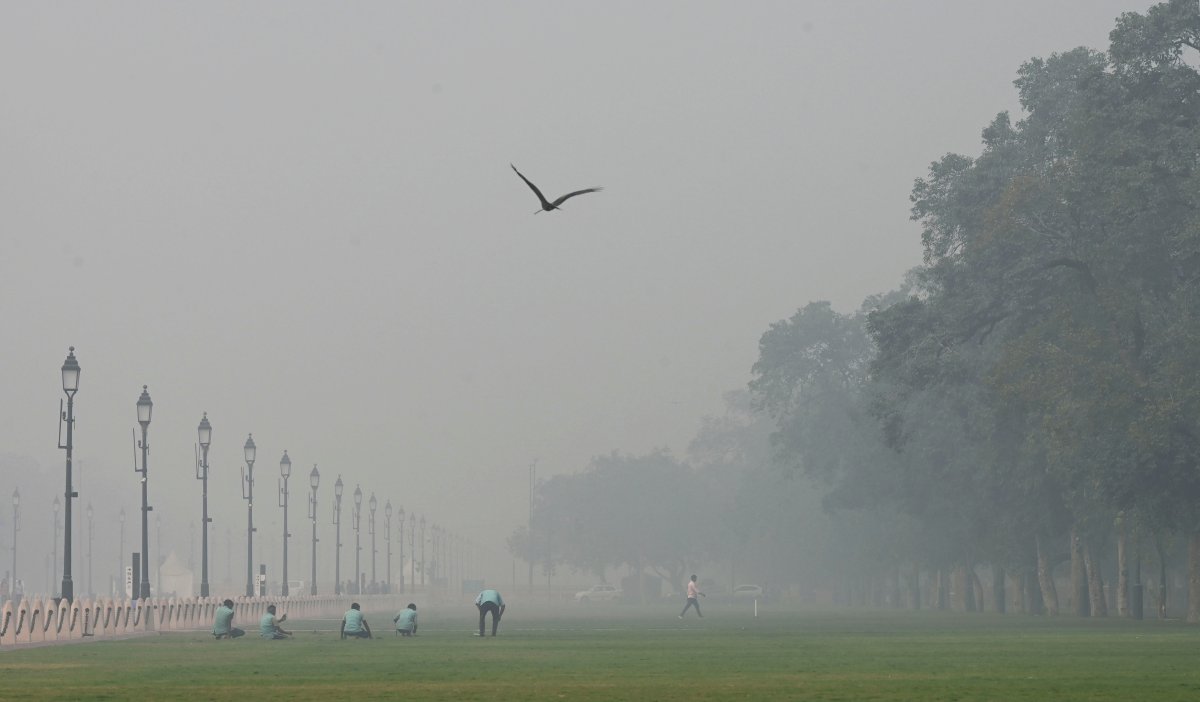Last week, large swaths of North America were choking under wildfire smoke.

Cities in both the U.S. and Canada saw a haze descend on them, spurring warnings to stay indoors and to mask up for those who had to be outdoors. And as wildfires are expected to keep wreaking havoc on air quality, the response of cities across the world to emergency levels of air pollution may offer some solutions.
Canada is not the first country to face weeks of poor air quality, and in many parts of the world residents in cities like Beijing, China; New Delhi, India; Bogota, Colombia; and Paris, France have had to innovate and adapt.
Here’s how they do it.
In November 2014, Beijing played host to the 21st Asia-Pacific Economic Cooperation (APEC) conference. The city, notorious for some of the world’s worst air quality, had to clean up its air before the summit began.
In a very short span of time, the Chinese authorities put into place emergency measures to improve air quality ahead of the summit.
Production in factories around the capital city was either stopped or halted, along with slowing down construction work. Vehicular traffic was heavily curtailed, with traffic rules put in place alternating which vehicles could drive on which days.
The rule, when in place, means only vehicles with odd-numbered licence plates are allowed to drive on one day and only even-numbered ones the day after — a move introduced in 2008 to help ease congestion and reduce pollution during the Olympics and Paralympics, according to Reuters.

When improvements in 2014 did not meet expectations, the government doubled down.
Enhanced emissions reduction measures were put into place. Iron and steel, glass and coking industries were stopped. The curbs lasted all of 11 days but appeared to yield something Beijing residents hadn’t seen in quite some time – a blue sky.
The term ‘APEC Blue‘ caught on in China as meaning something beautiful, but fleeting.
A study in the Journal of Traffic and Transport Engineering in 2016 looked at the “odd-even” traffic measures and determined when used in 2008, it did lead to improvements — but that they also come with a heavy impact on residents.

Get breaking National news
“Short-term traffic demand management measures can provide support for mega-events. However, based on the analysis in this paper, the degree of traffic reduction is not proportional to the number of vehicles restricted.”
Even as Beijing’s air quality showed signs of improvement amid the 2014 measures, in another Asian city officials were acknowledging air quality was just as bad.
According to The Guardian newspaper, Indian authorities admitted in May 2014 that air pollution in New Delhi was comparable to that in Beijing — a challenge that continues to hang heavy.
Every fall, the smoke from agricultural fires in the north makes its way toward New Delhi. The city’s air quality plummets around this time, mixing with its already-high base levels of pollution.
In response to rising concerns in 2016, Indian authorities rolled out a Graded Response Action Plan (GRAP) to try to tackle air quality.
The plan consists of four emergency stages, each of which corresponds to a threshold of air pollution, and the idea is simple – the worse the air quality gets, the more stringent the controls get.
The scale measures levels of what is known as particulate matter (pm) 2.5. That refers to particulate matter in the air that’s either two and a half microns wide, or less.

The first stage, where the levels of particulate matter (pm) 2.5 levels are between 61 and 120, the air quality is labelled “poor.” In this first stage, the government imposes heavy fines on garbage burning. Authorities also sprinkle water on the streets with heavy vehicular traffic, to keep the particulate matter from dispersing up into the air as vehicles roll by.
The second stage is called the “very poor” stage, where pm 2.5 levels are between 121 and 250.
In this stage, the government cracks down on the usage of diesel-powered electricity generators. To keep cars off the streets, municipal parking fees are hiked significantly, and the frequency of buses and Delhi Metro trains increases. Children, the elderly and people with respiratory problems are advised to stay indoors.
In the “severe” category (251-250), hot mix plants, brick kilns and stone crushers are banned from operating. And when the levels of pm 2.5 cross 350 on the Air Quality Index (AQI) and the city enters the “severe plus” or “hazardous” level, all construction activity is stopped.
Heavy vehicles like trucks and tankers are banned from entering the city. Even schools are shut down, though there remain questions about the impacts of such plans.
“While these graded response systems are a necessary intervention, their impacts are questionable. They may not necessarily have the kind of impact that that we need,” said Siddharth Singh, an energy, mobility and climate policy expert and the author of the book The Great Smog of India.
The city of Bogota, Colombia also has a graded response plan, and while not facing air quality as poor as Beijing or New Delhi, the city has laid out numerous proposals over recent years to tackle air quality and pollution.
Rather than short-term proposals, many of Bogota’s plans look longer-term.
In 2020, it became the first Latin American city to declare a climate emergency. An important part of Bogota’s climate plan is to replace the use of fossil fuels to reduce greenhouse gas emissions by 50 per cent by 2030.
The city pledged to stop buying any public transportation vehicles that use fossil fuels. Bogota also made commitments regarding changes in land use policy, to make communities more sustainable.

The perspective is similar in ways to approaches taken by Paris, where Singh lives.
He says Paris has transformed its cityscape radically in a very short span of time, with markedly improved air quality in the French capital.
“Paris has actually seen quite a bit of transformation. If you see the air quality levels from 10 years ago, you will see a significant drop (in pollution levels),” he said.
“There is much-improved air quality on average and Parisians have benefited since several roads are now pedestrianized. Cars and trucks are no longer welcome on the streets, and those streets have been reclaimed by people.”
Paris’s dedicated bicycle lanes have also reduced vehicular traffic in the city, Singh said. In 2015, Paris also banned old cars to combat its infamously poor air quality.
Cities in North America, however, are more sprawled out than Delhi, Beijing or Paris and far more car-reliant, making access to public transit difficult. But they too will need to decide how to tackle air quality in the longer term.
“As North American cities grow, they must think about how they design new neighbourhoods, how they’re able to ensure that there’s greater public transport access, that there’s more integration of renewables in urban settings,” Singh said.
This year, Canada could be on track to having a record level of land burnt due to wildfires. In 2023, 2,293 wildfires have torched 3.8 million hectares of land. These fires forced more than 20,000 Canadians out of their homes.
Environmentalists say climate change has made this year’s wildfires worse.
- Hurricane Helene claims lives of Georgia mother and her one-month-old twins
- Tropical Storm Milton forms in Gulf of Mexico, could intensify as a hurricane threatening Florida
- Imperial Oil to pay hefty fine for 2021 oil spill that sickened residents
- Northern lights set to shine in parts of Canada this weekend. Here’s where











Comments